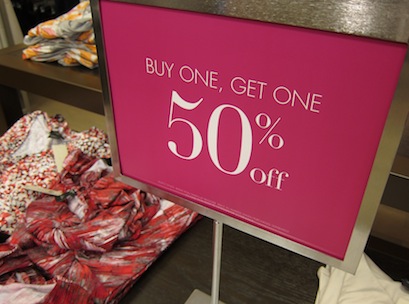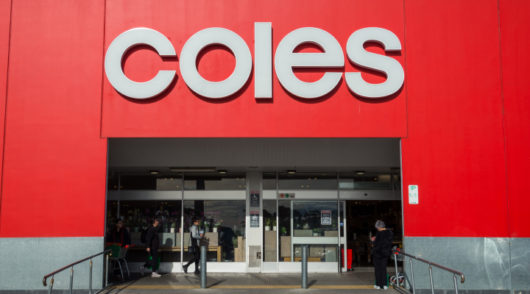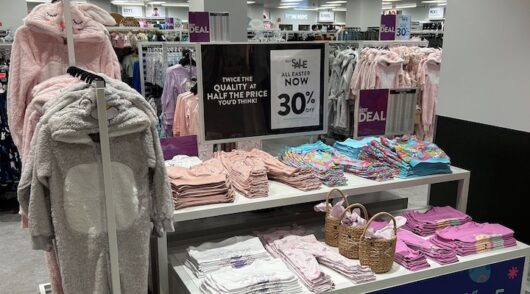 Retail spending in February rose 4.3 per cent compared to February 2014, according to the latest figures released by the Australian Bureau of Statistics (ABS).
Retail spending in February rose 4.3 per cent compared to February 2014, according to the latest figures released by the Australian Bureau of Statistics (ABS).
The results comes on the back of the RBA’s decision to lower the official cash rate in February, with consumers spending $24.059 billion in February – a 0.7 per cent month on month increase. February’s sales rise follows a 0.4 per cent month on month increase in January 2015 and three per cent rise year on year.
Household goods retailing recorded the highest amount of growth in February, up 1.8 per cent; followed by other retailing, 1.3 per cent; and food retailing, 1.2 per cent.
A decline in sales was witnessed by department stores, 3.2 per cent; followed by cafes, restaurants, and takeaway food services, down 0.4 per cent; and clothing, footwear, and personal accessory retailing, 0.2 per cent.
Sales were up across up the country, with the Northern Territory leading the spending, up 2.3 per cent. This was followed by South Australia, 1.7 per cent; the ACT, 1.6 per cent; Victoria 0.8 per cent; Tasmania, 0.7 per cent, Western Australia, 0.7 per cent; NSW, 0.7 per cent; and Queensland, 0.2 per cent.
The ABS’ experimental domestic online series recorded a nine per cent fall in February compared to January. Despite this drop, online retail turnover rose 20 per cent compared to February 2014. According to the ABS, online sales represents around 2.8 per cent of total domestic retail activity.
Russell Zimmerman, executive director of the Australian Retailers Association, said today’s sales figures, although modest for the month, were heading in the right direction.
“February is usually a tough trading month for retailers so we are certainly pleased to see month on month retail figures continue to rise. Year on year growth for February is also looking strong at 4.3 per cent, despite shaky levels of consumer confidence over the past year,” Zimmerman said.
“February is often the time when consumers ‘get back to reality’ after their Christmas holidays and start looking at their budgets for the year ahead. There may have been a slight drop in discretionary spending, impacting a number of sectors including clothing, footwear, and personal accessory retailing (0.2 per cent), cafes, restaurants and takeaway food services (0.4 per cent), and department stores (3.2 per cent).”
Zimmerman said that although some sectors experienced sluggish sales, Valentine’s Day was certainly a welcome holiday mid-February for many retailers, adding low petrol prices are also likely to have contributed to consumer spending patterns.
“Retailers are now starting to focus their attention on the upcoming Federal Budget for a confidence boost and will be looking to the discussed small business tax cuts being delivered in order to boost their bottom lines,” he said.
Anna McPhee, CEO of the Australian National Retailers’ Association (ANRA), said said the decision by the RBA to lower the official cash rate in February has likely encouraged retail spending to grow in February, however, time will tell if the lower cash rate will deliver recurring benefits to the economy in the months to come
“Retailers will be encouraged by the positive start to 2015 with consecutive rises in retail activity correlating with improvements in consumer sentiment.
“Retailers remain cautious of the potential impact of the impending Federal Budget to consumer confidence and retail activity and we would encourage the Government to consider the need to clearly articulate the benefits and costs of major policy announcements to consumers to deliver continuity to confidence and not hamper consumers’ willingness to activate the economy,” said McPhee.
Trevor Evans, CEO of the National Retail Association (NRA) said the results were unexpectedly strong, particularly given the fact that February is a shorter month than others.
“This continues the run of steady growth for retail which is very pleasing to see, particularly given that other sectors such as mining and resources are struggling,” Evans said.
“While some other sectors are shedding jobs at the moment, retail continues to be one of the best placed industries to pick up the slack.”
Evans said the figures showed shoppers and businesses were starting to feel the benefits of the RBA’s decision to cut cash rates in early February.
“However, while rate cuts are welcome, we are also aware that they can be a double-edged sword. More money in shoppers’ pockets is always good news, but if rates cuts are viewed as a sign of the economy beginning to falter, that can have a negative impact on purchasing decisions,” Evans said.





